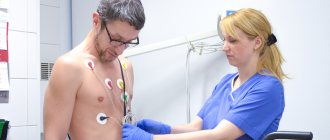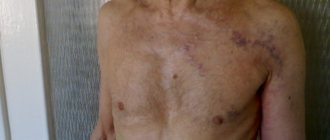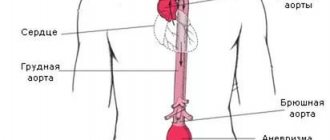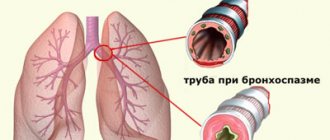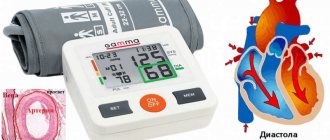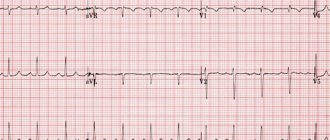For many women, and men too, the pressing question is how to remove blood vessels on the nose and other parts of the face. Spider veins can form in the nose or cheeks at any age, but they do not pose any particular health risks. The concern is more likely a cosmetic defect. In addition, it would be advisable to understand the cause of their appearance, especially if a person has any chronic diseases. In the material below we will look at why vascular mesh (rosacea) appears on the nose and other parts of the face and how to take a comprehensive approach to its removal.
Cooperosis on the nose - what is it?
We need to understand what it is in order to fully understand the complexity of the situation and further treatment of rosacea.
This is the name of a disease of the subcutaneous vessels, which provokes their redness in some areas of the face and body. This is not an inflammatory process in the body, but a person’s appearance with such a disease is not the best and causes a lot of problems in terms of aesthetics.
Cuperosis occurs as a result of the capillary walls becoming weaker and less elastic. The initial signs of rosacea on the nose are dryness and thinning of the skin, as well as numbness.
This stage does not cause concern and often goes unnoticed, so no one seeks medical help, and therefore the start of treatment is also delayed.
Anyone can face this problem. But most often it affects fair-skinned people. Usually the pathology is diagnosed at the age of 30-50 years.
Plastic surgeon Lee Kleiman
Over time, the subcutaneous vessels begin to burst, resulting in a pattern of red capillaries appearing on the nose. The photo above shows what rosacea looks like on the nose.
In other words, rosacea is a microbleed under the top layer of skin; it can form not only on the nose, but also on other areas of the face and body.
Weak vessels in the nose: treatment
Probably, many have had to deal with nosebleeds at least once. This situation is very unpleasant, but, unfortunately, quite common in the modern world.
Blood may appear against the background of general well-being or after some kind of exposure. And it happens that the problem haunts a person for a long time.
And then a logical question arises: why are there such weak vessels in the nose and what to do to strengthen them. But the answer should be sought from a competent specialist.
General information
The nasal cavity is the initial section of the respiratory system. And it has important functions. Thanks to the ciliated epithelium and mucus, the air is purified from germs, dust, allergens and chemicals. In addition, as it passes through the nasal passages, it is moistened and warmed.
But none of these functions is possible without adequate blood supply. Therefore, a dense network of capillaries is located in the submucosa.
There are especially many of them in the anterior part of the nose - in the so-called Kisselbach zone. To ensure maximum contact with inhaled air, the vessels here lie at a minimum depth.
This superficial location often becomes the anatomical cause of nosebleeds.
Causes and mechanisms
Capillaries in the nose can burst for various reasons. Weak blood vessels are not a diagnosis, but a consequence of local or general disorders in the body. There are quite a lot of similar situations, so only a doctor can help you find out the origin of nosebleeds. Among the local processes responsible for such a symptom, it should be noted:
- Injuries (direct impacts, falls).
- Chronic rhinitis (atrophic).
- Foreign bodies.
- Deformation of the nasal septum.
- Tumors (hemangioma, granuloma, cancer).
These disorders lead to damage to the mucous membrane and the vessels underlying it. The capillary wall ruptures in some area, and blood flows out.
But, besides this, there is another group of reasons - of a general nature. And it is much more extensive.
The list of probable sources of nosebleeds includes both quite simple ones, for example, dry air in the room, and quite serious ones:
- Poor nutrition and vitamin deficiencies (lack of ascorbic acid and rutin).
- Psycho-emotional stress, fatigue.
- Excessive physical activity.
- Respiratory diseases (flu, ARVI).
- Blood diseases (coagulopathy).
- Cardiovascular pathology (hypertension, atherosclerosis).
- Liver dysfunction (cirrhosis).
Weakness of capillaries can also have a physiological origin. Changes in hormonal levels during pregnancy, puberty or menopause are another factor that provokes nosebleeds. As you can see, there are more than enough reasons. And if a vessel in the nose bursts, it is better not to try to find out anything on your own - only a doctor will give a competent answer.
Bleeding from the nose can occur due to various factors - local or general. But the specific source of the problem will be determined during diagnosis.
Symptoms
Weak vessels in the nose are not a pleasant situation. And given the many possible conditions, it requires a high-quality examination. At the initial stage, the doctor evaluates the anamnestic information, including complaints, and conducts an examination. In this way, an idea of the clinical picture of disorders in the body is formed.
Considering the main symptom of vascular fragility - nosebleeds - you should understand its features. And these include the following:
- View (front or rear).
- Intensity (strong, moderate, weak).
- Frequency (frequent, rare).
- Duration (short-term, long-term).
- Other points: what is the reason for the appearance, how does it stop (on its own or after certain events).
If the Kisselbach area is injured, blood is released out. As a rule, it flows from one nostril, but there is also bilateral damage. Weakness of the vessels located at the back leads to the flow of blood along the walls of the throat. The patient then swallows or spits it out. The nasal cavity is not examined during ongoing bleeding; it must be stopped first.
Diseases of the nose
If blood vessels burst in the nose, then they begin to look for the cause here. Very often, a similar symptom is observed after an injury. Then swelling of the soft tissues is determined, bruises are visible.
The nose is sometimes deformed (with fractures), its palpation is painful. If, upon examination, the mucous membrane is thinned with translucent vessels, then we are talking about atrophic rhinitis.
It will manifest itself with other signs:
- Feeling of dryness, burning.
- Crust formation.
- Difficulty in nasal breathing.
- Decreased sense of smell.
Foreign bodies or a deviated nasal septum become an obstacle to the passage of air. They put pressure on the mucous membrane, thereby damaging it. Small vessels that can burst are also affected. Such patients often develop rhinitis.
Tumors with damage to the vascular system also cause nosebleeds. Hemangioma is a tangle of dilated capillaries that can acquire a cavernous structure. Changed vessels are easily injured by any external influence, including cleansing the nose. But tumors that destroy tissue themselves damage the capillary wall.
Pathology of the nasal cavity should attract the attention of an ENT doctor when bleeding occurs.
Respiratory diseases
Colds accompanied by fever are accompanied by expansion of the capillary network, especially in the nose. The situation is aggravated by inflammatory phenomena with increased vascular permeability.
The load increases significantly with influenza, the virus of which has a tropism for the endothelium. Therefore, nosebleeds become a common symptom of the disease.
Among other signs, one cannot fail to note the following:
- Puffiness of the face, injection of the sclera.
- Runny nose, nasal congestion.
- Sore throat.
- Dry cough.
- Headache.
- Body aches, malaise.
The virus affects not only the upper respiratory tract, but also the lower sections. Pneumonia with influenza can take on a hemorrhagic shade, sometimes with pulmonary edema.
Coagulopathies
Disturbances in the hemostasis system cannot but affect the condition of the vascular wall. Blood clotting occurs by two mechanisms. The first is vascular-platelet hemostasis, in which the endothelium and formed elements participate. It is faster, but not reliable enough. And the second is associated with the inclusion of the coagulation cascade (clotting factors, thrombin, fibrinogen, etc.).
Nosebleeds can occur when both mechanisms are compromised. But at the same time, hemorrhagic manifestations will also occur in other parts of the body:
- The rash is pinpoint or “bruise-like” type.
- Ecchymoses, hematomas.
- Accumulation of blood in cavities (joints, pleura, pericardium).
- Menometrorrhagia.
- Hematuria.
- Gastrointestinal, pulmonary bleeding.
This naturally leads to the appearance of signs of anemia: pallor, dizziness, dry mouth, general weakness, brittle hair and nails, shortness of breath, increased heart rate and decreased blood pressure. Severe coagulopathies (for example, hemophilia) pose a real threat to life.
Hypertension
Arterial hypertension causes an increase in blood pressure. In patients with a long course of pathology, sharp jumps (crises) are often observed.
At the moment of such a rise in pressure, the vascular wall of the small capillaries in the nose cannot withstand it (especially with concomitant atherosclerosis), and the burst vessel becomes a source of bleeding.
But, in addition to this, patients also have other symptoms:
- Headache.
- Flashing “fly spots”, fog in the eyes.
- Noise in ears.
- Increased heart rate.
But you should be as careful as possible, because this can also happen with vessels of other locations. The most serious are ruptures of arteries in the brain, leading to hemorrhagic strokes.
Cirrhosis of the liver
Hemorrhagic syndrome in cirrhosis is one of the manifestations of liver dysfunction. The fact is that the organ metabolizes many proteins, including prothrombin.
And it is precisely necessary for blood clotting. Therefore, cirrhosis of the liver is accompanied by symptoms of a violation of the coagulation link of hemostasis, in particular nosebleeds and rash.
In addition, it is worth paying attention to other characteristic features:
- Heaviness in the right hypochondrium.
- Decreased appetite.
- Jaundice.
- Enlarged abdomen (ascites).
- Dilation of the saphenous veins.
- Reduced pressure.
Developing liver failure leads to intoxication of the body with metabolic products. In this case, all organs and systems suffer.
Cirrhosis is a dangerous disease in which the liver loses all its functions. This is accompanied, in particular, by nosebleeds.
Additional diagnostics
Additional research will help determine why the vessels in the nose have become weak. Complaints of frequent bleeding will force the doctor to refer the patient for laboratory and instrumental diagnostics:
- General blood and urine tests.
- Biochemical blood test (coagulogram, liver tests, inflammatory markers).
- Nasopharyngeal swab (cytology, culture, PCR).
- Electrocardiogram.
- Ultrasound of internal organs.
- X-ray or tomography.
A comprehensive examination may include other procedures - it all depends on the preliminary conclusion of the doctor. And after receiving the test results, the specialist will make a final diagnosis, according to which therapy will be prescribed.
Treatment
For weak vessels in the nose, treatment should be differentiated. This means that each pathology requires its own measures. And it is necessary to influence not only the vascular wall, but also the factors that have become the direct source and mechanism of the disorders.
General recommendations
To strengthen the vessels in the nose, you can use simple general tips. These include the following:
- Complete and fortified nutrition.
- Air conditioning and humidification.
- Hardening and contrast shower.
- Avoid stress and overwork.
Particular importance is given to proper diet. The diet must include plant foods rich in vitamin C and rutin (fresh fruits and vegetables, herbs). Juices, fruit drinks, berry compotes and decoctions (black currant, rose hips) are useful. The ratio of basic nutrients (proteins, fats and carbohydrates) and caloric content correspond to age, gender and physical activity.
First aid
When you have a nosebleed, it is important to know how to provide first aid. Skillfully carried out measures contribute to hemostasis and improvement of the patient’s condition. Among the basic principles of medical care at the prehospital stage, it is worth noting the following:
- Place the victim in a chair with his head slightly tilted forward.
- Insert cotton swabs (gauze pads) moistened with a solution of hydrogen peroxide into the nasal passages.
- Squeeze the wings of the nose.
- Apply cold to the bridge of your nose.
These methods help with anterior bleeding, but rear bleeding requires mandatory medical intervention, since it will not be possible to reach the damaged vessel. A posterior nasal tamponade is required here.
First aid measures help stop nosebleeds in most cases. And then it is necessary to treat the underlying disease.
Medicines
Medicines will help improve the condition of the vascular wall. They act on various mechanisms and have several points of application. The following medications can be recommended for nosebleeds:
- Vitamins (Ascorutin).
- Hemostatics (Etamzilat).
- Salt solutions (Otrivin More, Aqua Maris).
- Vegetable oils (rosehip, sea buckthorn).
For frequent respiratory infections, immunostimulants (interferons, Polyoxidonium) are used, and influenza requires antiviral treatment. If another pathology is detected, then there is a need for specific and syndromic therapy.
Operation
Bleeding vessels can be cauterized (vasotomy). This technique is used when conservative treatment is ineffective. The mucous membrane and superficial capillaries are coagulated using silver nitrate, laser or radiosurgery. But after the operation you will still have to undergo a course of therapy aimed at strengthening the vascular wall.
Those who have had blood vessels burst in their nose know how unpleasant it is. And if bleeding is a frequent concern, you must definitely find out its cause. But only a doctor can conduct a full diagnosis and prescribe adequate treatment.
Source: https://elaxsir.ru/zabolevaniya/nosa/slabye-sosudy-v-nosu-lechenie.html
#4 stages of the disease and symptoms
Like any other disease, rosacea on the nose develops gradually and each stage is characterized by certain symptoms:
- At the first stage, dry skin with an increased level of sensitivity is noted. During washing, an unpleasant burning sensation may occur. Outwardly, no special changes are observed, the nose becomes a little redder, as if it had been rubbed during a long runny nose.
- In the second stage , redness spreads from the nostrils to the back of the nose, and vascular patterns begin to appear.
- The third stage is marked by a more obvious vascular network, and ulcers and pimples appear on the nose. Immediate treatment is required.
- At the last stage of the disease, the skin of the nose becomes much rougher and thicker, and bumps appear on the nose.
However, redness on the nose does not always indicate capillary disease. Damage to the subcutaneous vessels can cause severe frosts, a long runny nose or nasal injuries.
The difference between rosacea and temporary changes is simple - rosacea does not disappear after some time.
Preventive measures
To prevent rosacea it is recommended:
- Adjust your diet. It is necessary to avoid fatty, spicy foods and alcohol.
- Do not use aggressive cosmetics with high alcohol content. All cosmetics must be completely natural.
- Avoid exposure to elevated temperatures and intense sunlight.
- Do not perform chemical facial cleansing or laser skin resurfacing.
Compliance with the above recommendations will help reduce the likelihood of rosacea on the skin of the face.
Andrey Yurievich
Causes of the disease
Sometimes, having discovered rosacea on the nose, people, without consulting a doctor, begin to use powerful means to combat it. But before resorting to any measures, you should make sure that it is really rosacea, and for this you need to contact a specialist for diagnosis and prescribing the correct treatment.
False rosacea often occurs in teenagers; this is due to the hormonal storm that they experience at this age, so in this case there is no need to worry. And, often, rosacea is a disease of people exclusively of mature age.
It is impossible to say for sure what provokes the pathology. Its appearance can be caused by hormone fluctuations. For example, many women experience rosacea during pregnancy or menopause.
Dermatologist Rebecca Duff
The reasons for the appearance of rosacea on the nose can be different; knowing exactly why this disease develops will help you figure out how best to get rid of it.
Why does pathology develop:
- Heredity.
- Hormonal imbalance.
- Response to the environment.
Experts say that knowledge of the causes of the disease contributes to a more precise approach to the question of how to treat rosacea in a given case.
You shouldn’t worry too much or panic if you discover you have rosacea; you need to find out if any of your relatives suffer from this disease. If the answer is yes, then it will be easier for the doctor to prescribe treatment; it will be more difficult and longer, since diseases transmitted by inheritance are more difficult to treat.
Medical practice shows that it is much easier to prevent a disease with preventive actions than to treat an already developed pathology; it is worth remembering this always, not only in the case of rosacea.
Very often, signs of rosacea on the nose appear in women during pregnancy and lactation. In this case, changes in the skin make themselves felt due to changes in hormones.
No treatment is required here; after the hormonal balance is restored, rosacea will disappear by itself.
Also, the appearance of a pattern of broken capillaries on the nose and face occurs as a result of the use of oral contraceptives. If such unpleasant side effects occur, you just need to stop taking the pills.
Temperature changes can also affect the condition of microvessels. People with dry and sensitive skin often suffer from this. You can observe a network of blood vessels on their nose immediately after leaving a warm room into the cold.
In addition, before prescribing treatment, the doctor will ask how well the patient eats, since this can also affect the condition of the blood vessels. Spider veins can form due to a lack of vitamins.
Coffee and chocolate lovers are more susceptible to developing this pathology. In this case, the specialist will adjust the patient’s diet in order to get rid of the disease more efficiently and effectively.
Under no circumstances should the disease be ignored and masked with tonal means. At the first signs, you should seek qualified help from a doctor. The doctor will identify the causes and prescribe the necessary treatment.
In addition, bad habits such as smoking or alcohol abuse also provoke weakening of capillaries.
Vessels on the wings of the nose: how to remove them forever
There are many methods described on the Internet to help remove blood vessels on the wings of the nose.
. In this article we will look at which procedures are really “tailored” to removing blood vessels, and which ones hit the entire area of the skin. Let's look at why the laser procedure may not work.
Causes of the appearance of blood vessels on the wings of the nose
Noticeable veins of red, purple or purple color on the nose are capillaries overflowing with blood. Their wall lost its tone and stopped resisting blood pressure. Now there is nothing to help her: collagen fibers cannot be implanted into the membrane of the vessel, and there are no muscle cells in it that could forcibly narrow the capillary.
The main reason why the capillary wall has lost its tone is genetic predisposition. A defect in the genes responsible for the production of collagen - and now the capillaries are already more brittle and fragile. They become overflowing with blood even without visible harmful effects on the skin of the face.
A genetic predisposition to capillary fragility is observed mainly in people with fair skin. But in dark-skinned people, the vessels on the wings of the nose can also expand. The reasons for this are:
- passion for tanning;
- love of spicy food;
- smoking;
- high blood pressure;
- work in conditions of temperature changes;
- frequent aggressive peelings and dermabrasion;
- hormonal imbalance;
- liver diseases.
If these factors affect a fair-skinned person, the blood vessels will
his
wings of the nose
become noticeable much earlier than nature intended. In addition, a complication such as rosacea may develop.
How to remove blood vessels on the nose
Remember that blood vessels (capillaries) do not have a muscle layer? This means that it will not be possible to restore their tone with the help of exercises, massage or exposure to contrasting temperatures. Neither traditional methods nor taking medications will work: even by increasing the production of collagen in the vessels as a whole, they will not be able to narrow the already dilated capillaries. Just like you can’t return a balloon once inflated to its original form.
The only way to get rid of blood vessels on the wings of the nose is to remove them. For this, clinics offer several procedures:
Electrocoagulation
It involves treating dilated vessels with electric current. As a result, the capillary walls heat up and “stick” to each other. Blood stops passing through the sealed vessel and turns into a “tourniquet” of connective tissue. Over time, such a cord dissolves.
When performing electrocoagulation, the exposure time is not controlled by the device. This means that there is a high probability of heating not only the vessel itself, but also the surrounding skin. This can lead to burns, as a result of which either small scars or age spots will appear on the wings of the nose.
Phototherapy
The procedure involves exposing blood vessels to light waves. They are absorbed by hemoglobin, which is found in red blood cells, and heat it up. Heat is transferred to the walls of blood vessels and glues them together.
In phototherapy, the skin is irradiated with light waves of different lengths. Some of them, the most dangerous, are blocked by filters, but the rest have a wide spread: from 550 to 1100 nm. They are absorbed not only by hemoglobin, but also by other chromophore pigments. This can cause various reactions: inflammation, burns, and the appearance of light spots.
In addition, light waves of different lengths penetrate to different depths. Considering that the device sends high-density energy (10 times higher than that of a laser), it is clear that most of it heats the tissue. This is quite painful, even with the anesthetic cream.
A stream of light rays of different wavelengths cannot be collected into a small spot. It is difficult to treat the wings of the nose with a large beam: the rays will fall on the cheeks, the back of the nose, and the nasolabial folds. All these areas will subsequently hurt. In addition, they will be red and swollen for a long time.
Laser treatment
Laser is the most effective method of combating blood vessels on the wings of the nose. But if you choose the “wrong” device, it will not work.
What types of laser radiation sources are there?
To remove blood vessels, so-called “green” lasers are used, the rays of which are in the green-yellow light range. This:
- Neodymium laser with a wavelength of 532 nm. It destroys blue blood vessels. In its “pure” form it is difficult to use on the face, since - in order to avoid burns and scars - you need to very carefully select the parameters.
- Dye laser (PDL) with a wavelength of 585-595 nm. This laser perfectly removes red blood vessels, but if the capillaries become visible in a person with dark skin, then after treatment with this laser, light spots may remain on it.
- Copper vapor laser. It emits radiation with a wavelength of either 511 or 578 nm. It can precisely treat dilated blood vessels, but only on light skin – phototypes I and II. In people with darker complexions, pigment spots, blisters, and many crusts may form after the procedure.
As you can see, the definition of “green” alone does not provide an understanding of what kind of device is used in the clinic to perform the procedure.
Is it really possible that laser, such a seemingly effective method, can only be used on people with fair skin and red capillaries? Or you will have to choose which is better: the vessels on the wings of the nose
or age spots?
A laser that removes any vessels on the wings of the nose
Cynosure has found a way out of the situation. A device that copes with both red and blue vessels is Cynergy. It is created on the basis of two lasers:
- on dyes;
- neodymium
They are combined with Multiplex technology, which avoids the disadvantages of each of them that are described in the last section. How does this happen?
The device sends pulses in turn: first from a PDL laser, then from a neodymium laser.
The first of them converts hemoglobin into another form, resulting in the formation of microblood clots, and they absorb the energy of the neodymium laser 3-4 times stronger than if such radiation was sent in isolation.
The interval between pulses is adjusted individually, depending on the depth of the vessel and the speed of blood flow in it.
Multiplex technology can significantly reduce energy density. This means that the procedure is painless - because the surrounding tissues do not heat up. The epidermis also remains intact, therefore, no burns occur. And redness and swelling of the skin after the procedure lasts only 2-3 days.
Want to erase dilated blood vessels from your nose? Sign up for the DELETE clinic, we work with the Cynergy laser!
Source: https://delete.ru/blog/stati/sosudy-na-krylyah-nosa-kak-ubrat-ih-navsegda/
Treatment
If a person sees unpleasant patterns of broken blood vessels and redness on his face, his natural desire will be to get rid of them as quickly as possible. You don’t have to wait for a visit to the doctor and start treatment at home.
First of all, you need to make changes in your diet. You should not eat spicy, spicy, salty foods, smoked products, sweets, as well as drinks that increase blood pressure, such as coffee and alcohol.
Instead, you should fill your menu with cereals, vegetables and fruits, as well as eat liver and egg yolk.
According to the National Rosacea Society, UV rays are the main trigger for the condition. This is why it's a good idea to apply sunscreen every time you go outside (even if just for 5 minutes). It is better to choose products with mineral compositions (this includes zinc oxide or titanium dioxide).
Dermatological surgeon Amy Paul
In addition, it is worth quitting smoking at least for the duration of treatment, otherwise therapy at home will not receive positive reviews.
Treatment at home (5 recipes)
Couperosis on the nose can be treated by purchasing special products at the pharmacy or preparing them yourself using natural ingredients.
- Potato mask. Raw potatoes are peeled and grated, after which the mixture is applied to the nose and cheeks, and covered with a light cloth on top so that the juice does not drain. After the mask has been kept on the face for 20 minutes, it is removed, and the remaining potato juice should be washed off with chamomile infusion. Chamomile flowers have an antiseptic and soothing effect on the skin.
- Oatmeal. Oatmeal is not only good for breakfast, but also has whitening and anti-inflammatory properties. For the mask, you need to grind 50 g of oatmeal to a powder and mix it with olive oil. When you have a homogeneous mass, you can apply it to your face for 20 minutes and then rinse with water. The mixture copes well with inflammation and redness of the skin.
- Fresh berries are rich in vitamin C. In the summer, finding the right berries is not difficult. Raspberries, strawberries, sea buckthorn are good for a mask against rosacea, you can add a green apple. The ingredients are ground on a grater or using a blender, a teaspoon of starch is added to them and mixed thoroughly. It is recommended to keep the mask on your face for about 25 minutes, then rinse with cool water. To prevent juice from draining from your face, you can cover your face with gauze.
- Chamomile and vitamin C. These ingredients can be used to prepare a tonic for wiping. For the mixture, just one tablespoon of dry chamomile and pour 0.5 liters of boiling water over it. After the solution has cooled, you need to dissolve two tablets of ascorutin in it. Wipe your face with the resulting tonic twice a day.
- Usual face cream. A product that is good for the skin can be made even more useful by adding a little vitamin C. To do this, the asorutin tablet needs to be crushed and dissolved to a paste, then add the dissolved tablet to the cream and mix.
You need to use the cream as usual, the effect will not take long to appear. You can also add mint or rosemary essential oils to the cream.
Use hypoallergenic products that are suitable for sensitive skin. It’s good if it contains licorice extract, which reduces redness.
Dermatological surgeon Tracey Evans
What not to do (5 prohibitions)
Spots caused by broken blood vessels are quite sensitive and incorrect actions to eliminate them can only further harm the health of the skin.
Therefore, people suffering from rosacea should listen to the advice of specialists and not perform the following manipulations with their face:
- Scrubbing the skin can cause even more damage to the subcutaneous capillaries.
- You should also not use ice or a cold towel, as well as go to the sauna or bathhouse. It has already been said above about the effect of a sharp temperature change on weakened blood vessels.
- You should also forget about aggressive cosmetic procedures for the face, at least for the time of getting rid of the disease.
- Facial cleansers and care products containing alcohol. They dry out already dehydrated skin during rosacea.
- Use clay masks with great caution, and it is better to refrain from using them altogether.
Using traditional medicine methods, you can slightly alleviate the skin condition and prevent the disease from developing and spreading further. However, these are only auxiliary measures that provide a temporary effect.
For quality treatment, you should contact a professional. It is important to choose a clinic that has more positive reviews about the treatment. Then the therapy will be fast and high-quality.
What to do if there is significant damage to the capillaries?
If the patient ignores the first manifestations of pathology, the network of dilated vessels will soon acquire a brighter color. Such unpleasant “signals” are a sign that the condition of the vascular walls in the affected area leaves much to be desired...
You should not rely on folk tricks if rosacea on the nose is advanced (treatment should be carried out in a special clinic).
We list the main ways to eliminate dilated capillaries:
- Sclerotherapy. During this procedure, the doctor inserts a needle with a special substance into the “unruly” vessel, which glues it together. Not every clinic can offer this method of removing spider veins on the nose. But ladies who have undergone capillary sclerotherapy are almost always satisfied with the results.
- Ozone therapy. The essence of the method: using a thin needle, an oxygen-ozone mixture is injected into the capillary. This helps restore the elasticity of the vascular wall. This type of treatment is appropriate if the dilated vessels are not very small.
- Photocoagulation using laser. The doctor evaporates the blood inside the vessels with a laser, after which the vessel collapses and becomes invisible. This type of removal of rosacea on the nose is very popular among older women (their manifestations of the defect are often more significant than among young ladies). One of the disadvantages of the procedure is its impressive cost.
After the course of treatment, in order to avoid the development of relapses of rosacea, the patient will have to change her usual diet and even, possibly, her lifestyle. You should say goodbye to bad habits, and take care of your sensitive skin very carefully and carefully.
Source: zkozha.ru
Question answer
As soon as you notice signs of this pathology, reconsider your diet.
Remove from the menu too spicy, fried foods, and dishes with high fat content. After this, do not hesitate to go to the doctor. In most cases, doctors prescribe moisturizers and creams that promote regeneration. At this stage, massage is useful, as it has a positive effect on blood circulation. There is more than one remedy designed to treat the disease. But some have gained great popularity. This is Aaven Dirozeal. This name is given to a cream that eliminates redness and removes age spots. In addition, it is recommended to use Troxevasin. This remedy has a positive effect on blood vessels and capillaries. Another wonderful drug is Ascorutin. It contains important vitamins, rutin, and ascorbic acid. These substances make capillaries less brittle and restore them.
Yes, surgery is performed to correct this problem. The doctor removes the defect manually. This is a painful manipulation, after which you need to recover for a long time. They rarely resort to surgery, since it is generally not possible to eliminate all the affected vessels.
Symptoms of rosacea
The first symptoms of rosacea are a barely noticeable network of capillaries, a strong burning sensation, accompanied by itching. The next stage in the development of this disease is clearly visible capillaries on the nose. The third stage of rosacea is the appearance of such visible capillaries throughout the face. This means cheekbones, forehead and, naturally, nose.
Pronounced capillaries on the nose
Treatment by a doctor
So, if you discover signs of rosacea, you need to see a dermatologist as soon as possible.
For quality treatment, you need to get rid of the cause of the development of rosacea and approach the problem comprehensively.
It is important to remember that peeling and dry skin is the first “alarm bell” about the possible appearance of rosacea. If you do not pay attention to this in time, you will have to treat the disease at a later stage, which will take much more time and effort.
If you have rosacea, you should not remove dead skin particles with a scrub or peeling; specialized tonics or lotions are best suited here.
Plastic surgeon Brian Reedy
The process of getting rid of such an aesthetically unpleasant disease takes a long time and gradually.
When visiting a specialist, a person undergoes a full examination of the entire body, after which the doctor develops an individual treatment plan and gives recommendations that must be followed if the patient really wants to get rid of the signs of the disease.
After a certain period of time, you need to go to the doctor again so that the specialist can evaluate the progress of treatment and, if necessary, make adjustments.
If the examination provides information about a disease of any organ that provokes rosacea, treatment will begin with it.
Effective procedures in the fight against rosacea
No matter how competent the treatment is, it will not be possible to completely get rid of rosacea. But there are excellent procedures that help remove the symptoms of pathology:
- Laser therapy. The doctor uses a laser on the skin. As a result, the blood present in the vessel evaporates. It will take a quarter of an hour. It is worth noting that you will have to spend a lot of money on such treatment.
- Sclerotherapy. A special method. The doctor injects a special drug into the vessel, which eventually causes it to stick together.
- Ozone therapy. For this purpose, an acid-ozone composition is used. It is also administered by injection. As a result, the vessels become more elastic, and the signs of the disease decrease.
- Mesotherapy. This is an injection procedure that involves introducing various cocktails into the skin. This leads to improved blood circulation and strengthening of blood vessels. It can also be carried out as a preventive measure.
- Photorejuvenation. The doctor acts on the skin with light, which is released with powerful energy. As a result, a connection of blood vessels is observed. In addition, the skin after this procedure is rejuvenated.
Couperosis on the nose can lead to thickening of the skin. In medicine, this condition is called rhinophyma.
Plastic surgeon Charles Perry
Diagnosis of diseases causing rosacea
First of all, if obvious external signs of rosacea on the wings of the nose appear, you should consult a dermatologist. He will order appropriate studies. You will also need to undergo a number of tests:
Couperosis examinations
- general urinalysis - to determine the correct functioning of the kidneys;
- blood test for levels of certain hormones;
- blood test with the participation of leukoformula - helps to detect problems in the functioning of various body systems;
- Ultrasound - not always, only if the doctor suspects a connection between rosacea and some other disease.
Often the reason for the development of rosacea on the wings of the nose lies in diseases that you are not aware of or did not attach much importance to them - hypertension, initial forms of rosacea, dermatitis, various vascular pathologies.
Expert opinion
- Surgeon
- Cosmetologist
Elsa Borodina
plastic surgeon
I advise you to add vitamins with rutin to your treatment. Various procedures must be carried out throughout life. The fact is that rosacea cannot be cured, but stable remission can be achieved.
Irina Dorofeeva
practicing cosmetologist
If you are faced with rosacea, do not give up.
Comprehensive treatment will help get rid of the symptoms of the pathology. To do this, make homemade masks, use creams and ointments. In addition, cosmetology will come to the rescue. To do this, I advise you to go for laser therapy, with its help you can achieve amazing results. Unfortunately, the process of treating rosacea is a long process. Doctors advise doing everything comprehensively. This is the only way to delay the relapse of the pathology.
Therefore, do not forget about the basic rules, use appropriate means, folk methods, and also remember the doctor’s recommendations.
Traditional methods
At home, you can use traditional medicine recipes.
Potato mask
- Option #1. To prepare the mask, you need to peel two potatoes, then grate them on a fine grater. Apply the mixture to your face. When the mask begins to dry, apply a second layer, wait 20 minutes and rinse.
- Option #2. Grate one peeled potato on a fine grater and mix with oatmeal. After 5 minutes, apply the mixture to the capillary mesh, wait 20 minutes, then rinse. Potato masks improve the appearance of the face and help blood vessels become healthy again.
Berry masks
Nature offers many gifts with healing properties. In the summer, fresh and ripe berries are always at hand at home, from which you can also make masks.
- Option #1. Grind strawberries and raspberries, add boiled water to the mixture and after the mask has cooled, apply it to problem areas.
- Option #2. Potato starch (one teaspoon), lingonberries, raspberries, strawberries, sea buckthorn berries. Mix everything and apply rosacea on top of the mesh.


